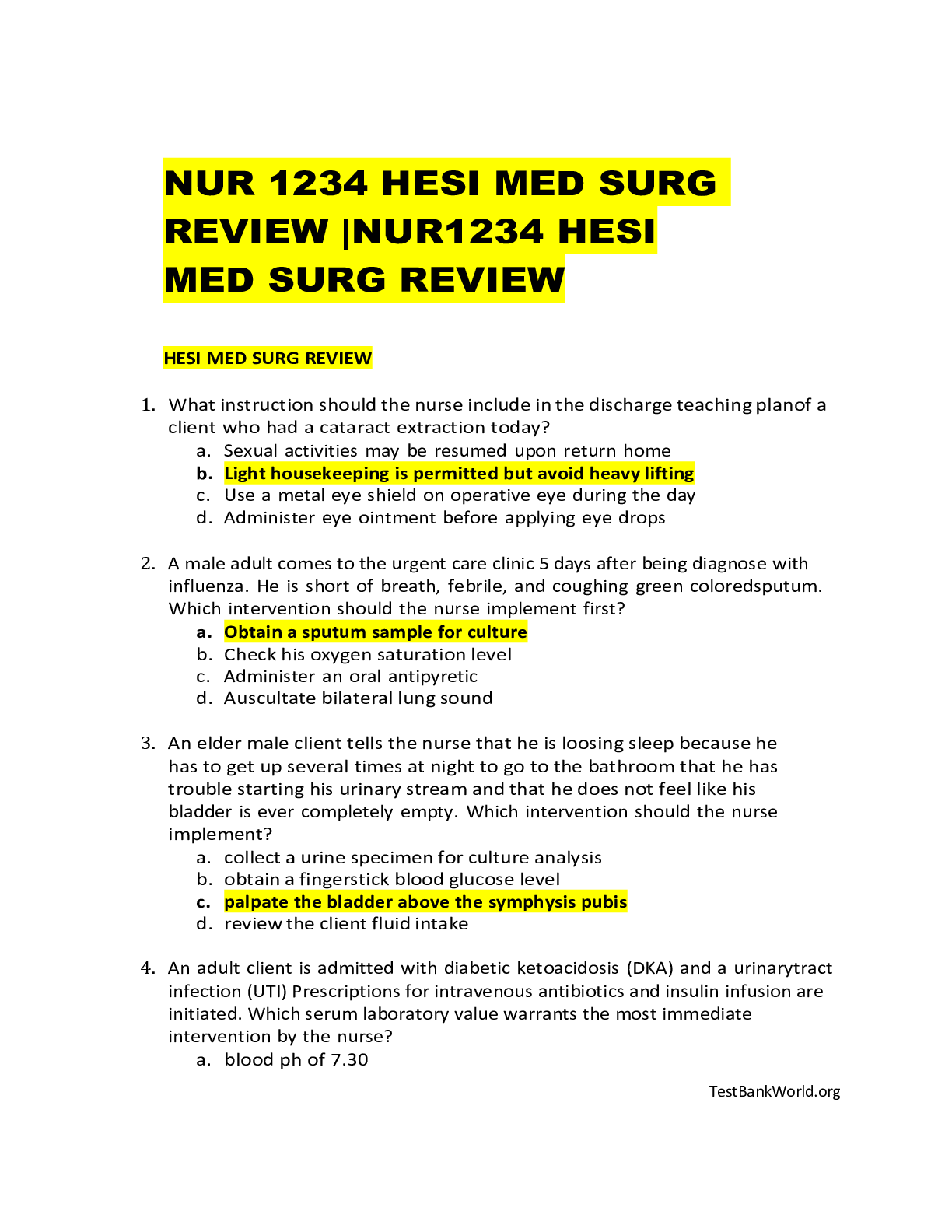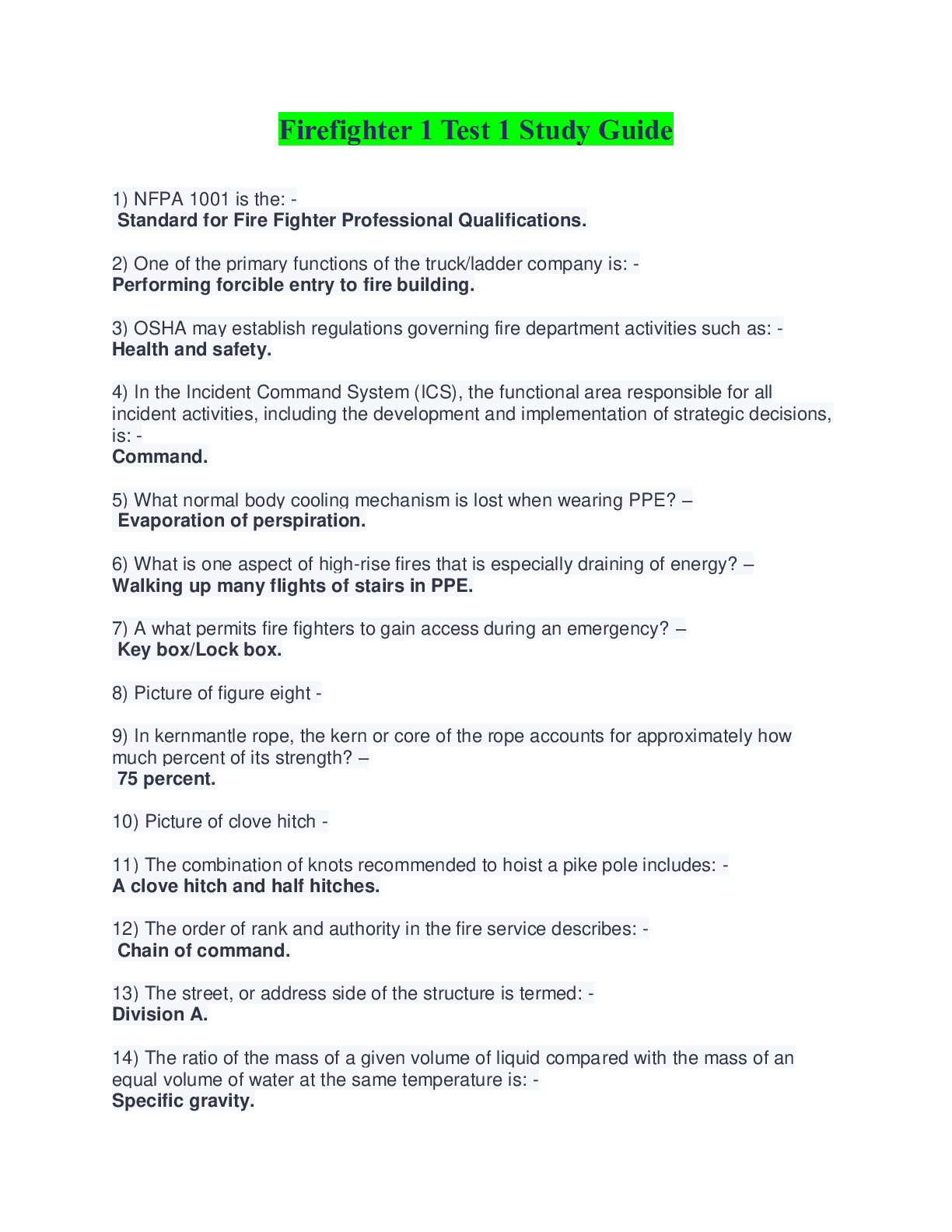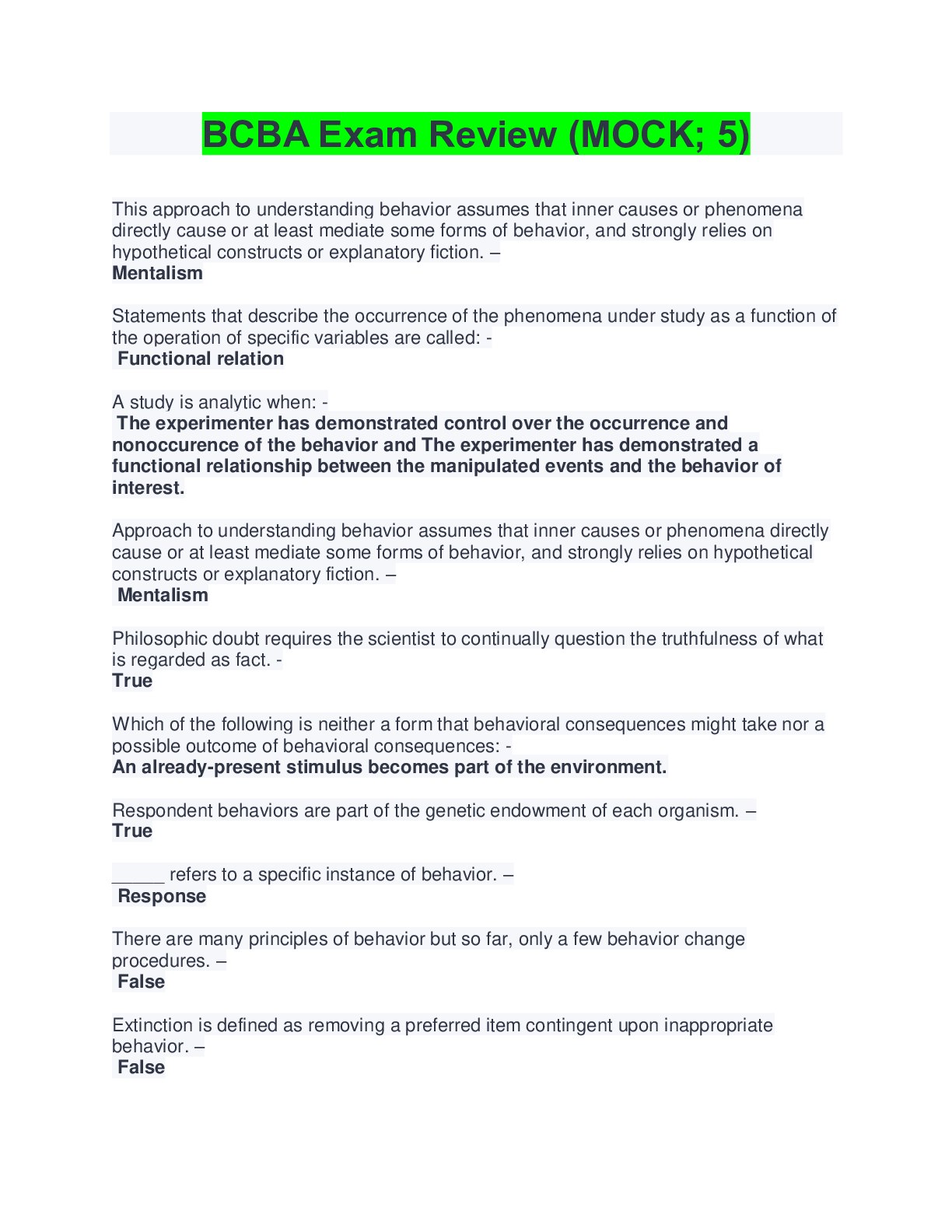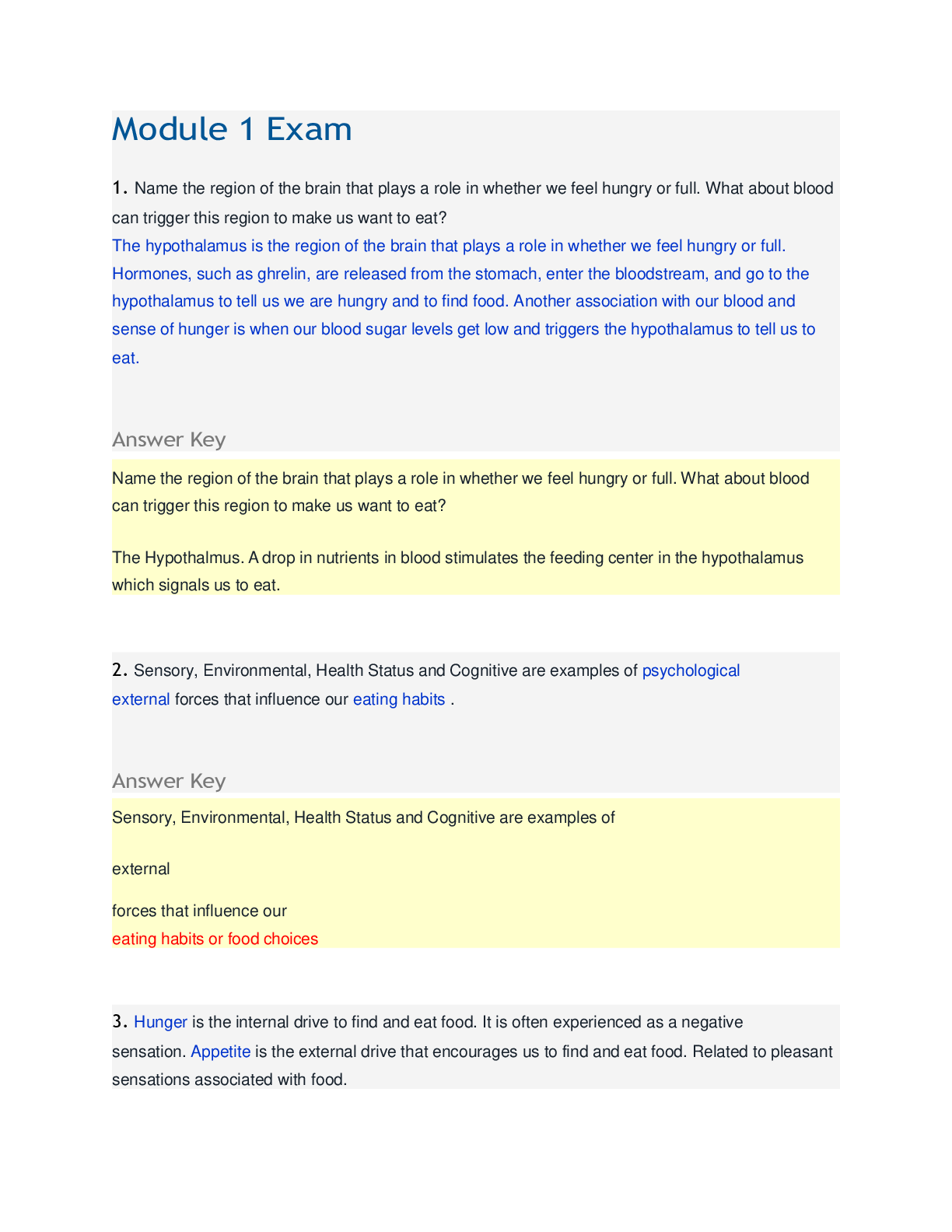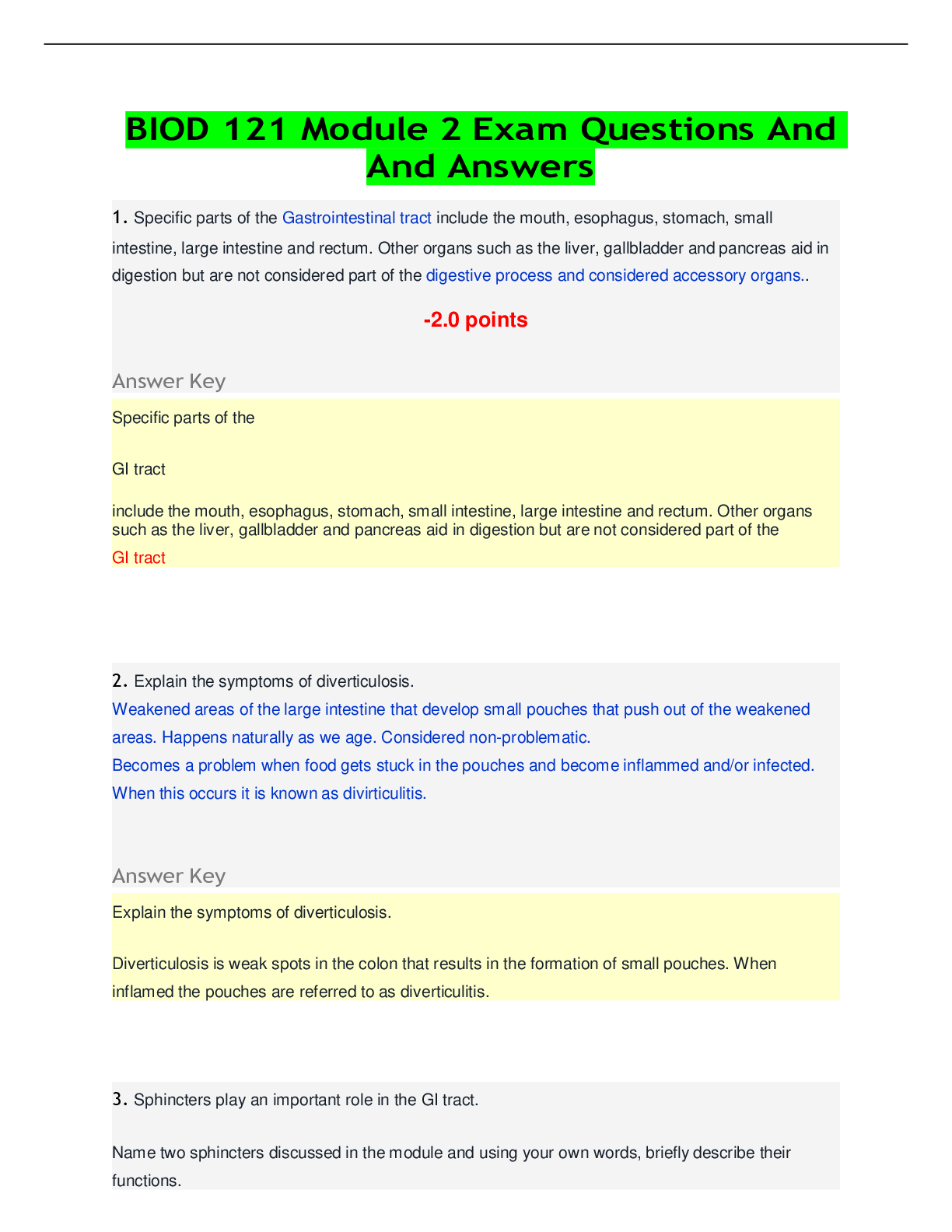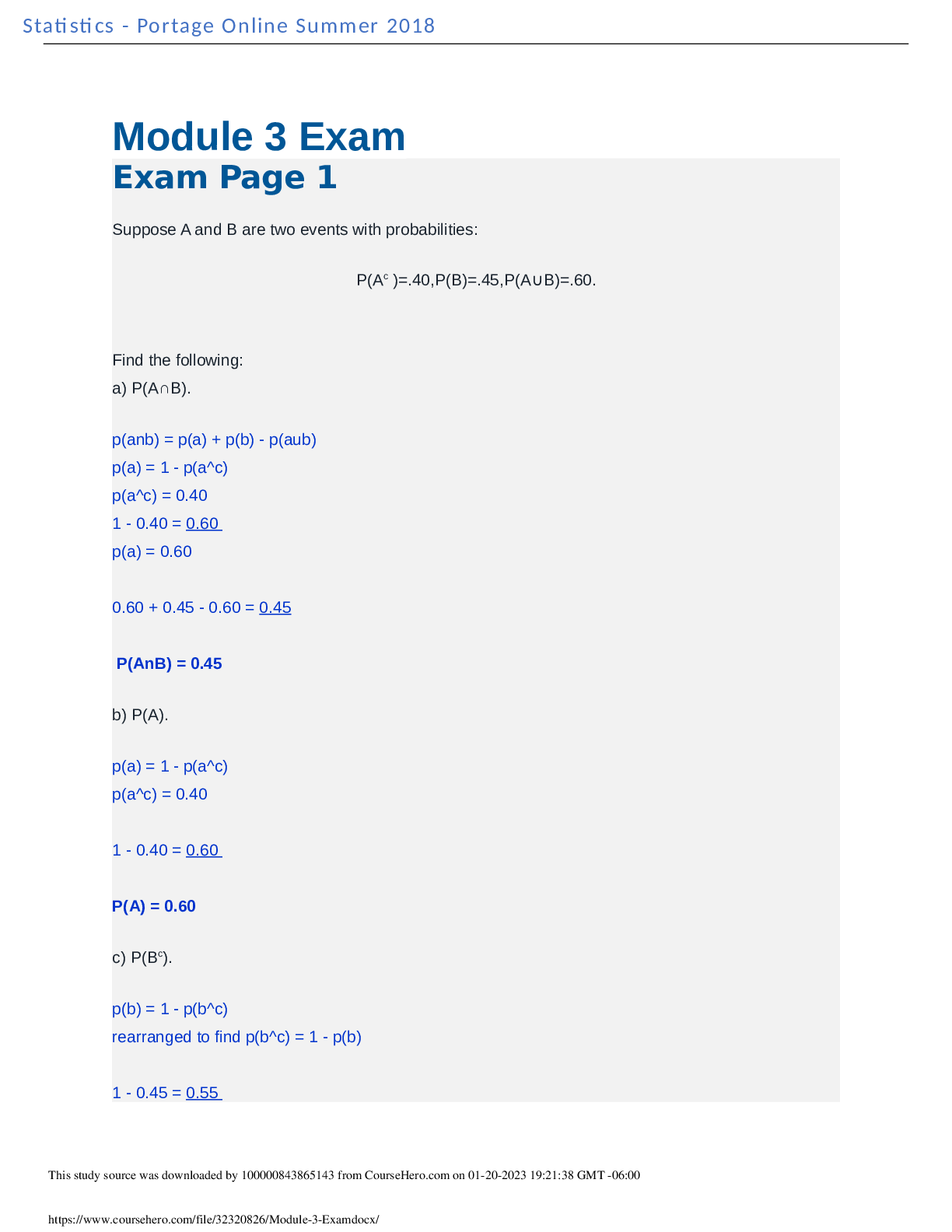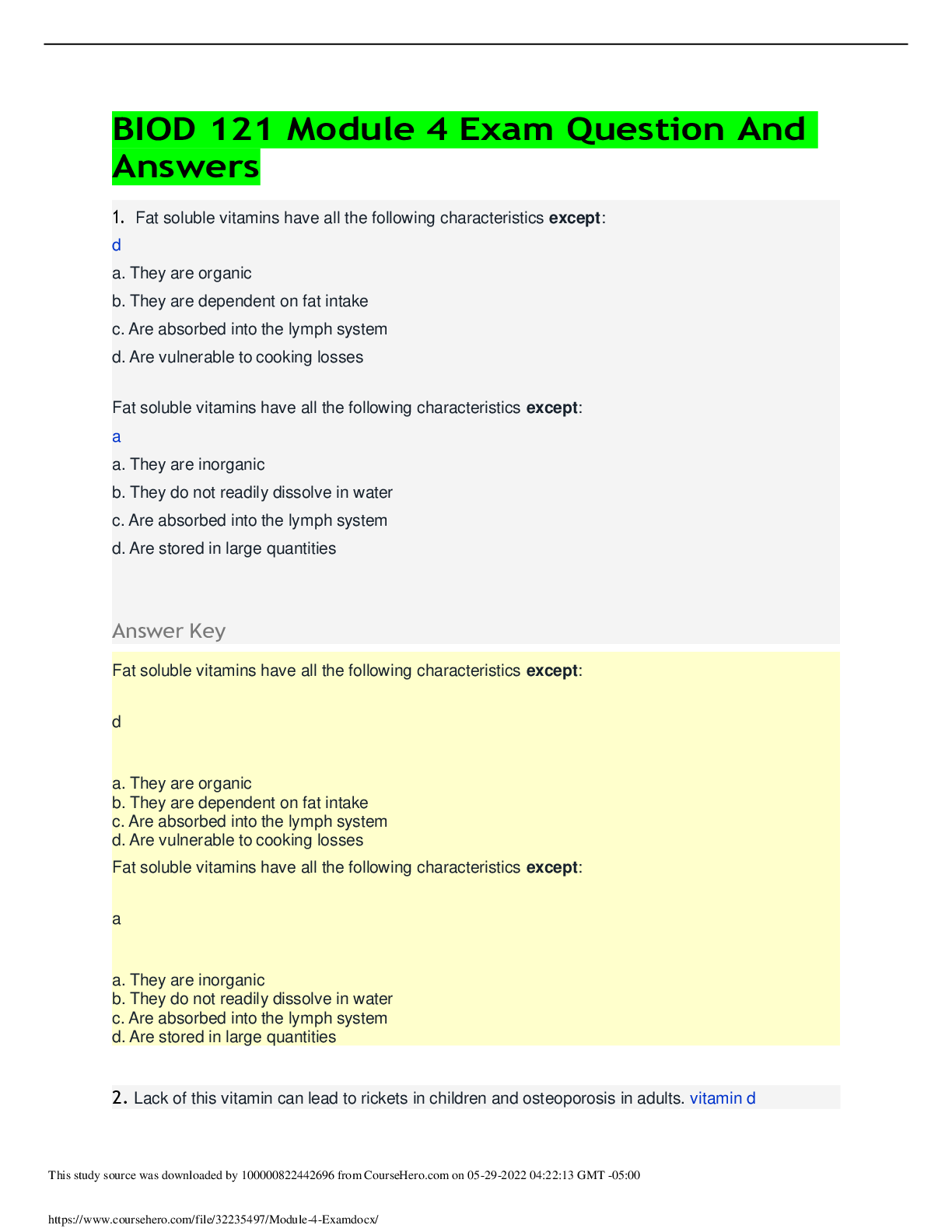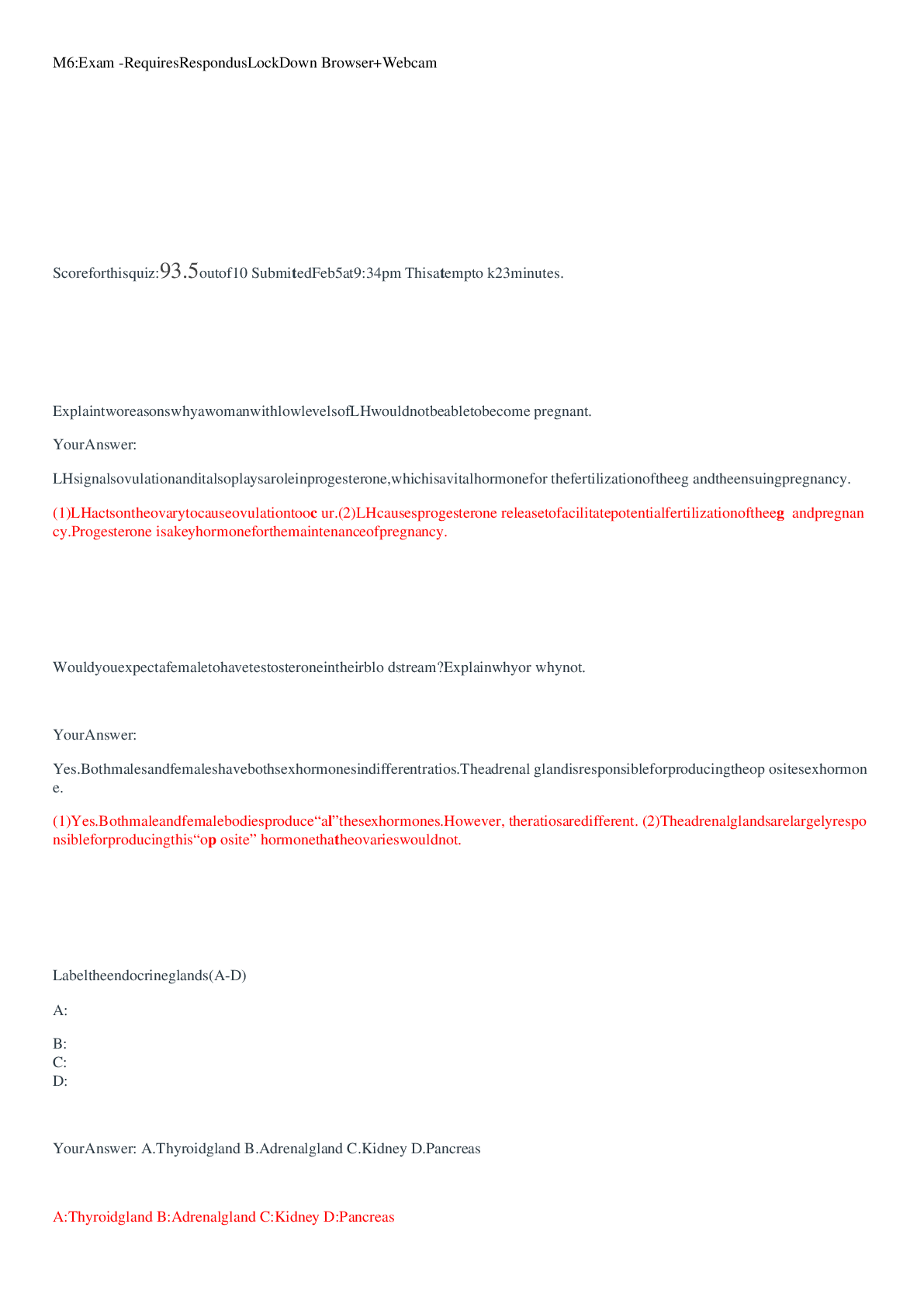Geology > EXAM > SCIN 138 Week 2 Exam- Questions and Answers Complete Solution Rated A/top score (All)
SCIN 138 Week 2 Exam- Questions and Answers Complete Solution Rated A/top score
Document Content and Description Below
SCIN 138Week 2 Exam (timed and single access) Part 1 of 2 - 36.0/ 52.0 Points Question 1 of 25 4.0/ 4.0 Points What piece of evidence for continental drift explains why we find ancient reefs in co ld ... climates? A. polar wandering B. the increase is sea level C. the fact that continents move Feedback:2 Plate Tectonics Question 2 of 25 0.0/ 4.0 Points Ocean–continent convergent boundaries are commonly associated with which landforms? A. oceanic trench, island arc B. broad mountain range, folds C. volcanic arc, forearc basin Feedback:2 Plate Tectonics Question 3 of 25 0.0/ 4.0 Points Which characteristics describe convergent boundaries? A. crust being neither created nor destroyed and shearing motion B. deep sea trenches, the destruction of seafloor crust, and subduction C. plates moving apart, the creation of new seafloor, and the Mid Ocean Ridge Feedback:2 Plate Tectonics Question 4 of 25 4.0/ 4.0 Points Which of the following statements is true? A. Plate tectonics built on or expanded on continental drift. B. Both theories have been proven false. C. Continental drift built on or expanded on plate tectonics. Feedback:2 Plate Tectonics Question 5 of 25 4.0/ 4.0 Points The Wilson cycle shows all but which of the following? A. how rocks cycle from one type to another B. how water cycles on the Earth C. how oceans open and close throughout geologic time Feedback:2 Plate Tectonics Question 6 of 25 4.0/ 4.0 Points Oceanic plates are composed of what rock type? A. granite B. quartz C. basalt D. diorite Feedback:2 Plate Tectonics Question 7 of 25 4.0/ 4.0 Points Which type of boundaries involve crust being neither created nor destroyed and shearing motion? A. transform boundaries B. divergent boundaries C. convergent boundaries Feedback:2 Plate Tectonics Question 8 of 25 4.0/ 4.0 Points Ocean-to-continent convergent boundaries can produce all but which of the following? A. volcanoes B. mountains C. new sea-floor Feedback:2 Plate Tectonics Question 9 of 25 4.0/ 4.0 Points Which of the following is the most accurate statement of how the Himalayas were formed? A. They are actually the original elevation of the continent. As the erosion weathered away to give the current surface, it left the mountains behind. B. During the last great flood, sediments were deposited that accumulated and were eventually eroded into mountains. C. As the Indian plate moved into the Eurasian plate, the continents collided and buckled up to form mountains. Feedback:2 Plate Tectonics Question 10 of 25 0.0/ 4.0 Points Which piece of evidence renewed the scientific community's interest in continental drift? A. how the continents fit together B. the presence of similar fossils on opposite sides of the oceans C. paleomagnetism D. glacial evidence in warm climates Feedback:2.1.3 Development of Plate Tectonic Theory Question 11 of 25 4.0/ 4.0 Points Which of the following would not support Continental Drift? A. You notice that the same fossil in Australia and Antarctica. B. You notice that both North America and Africa have the same type of earthquakes and volcanoes. C. You notice that a similar rock formation is found on both the west coast of Africa and the east coast of South America. Feedback:2 Plate Tectonics Question 12 of 25 4.0/ 4.0 Points Which characteristics describe transform boundaries? A. plates moving apart, the creation of new seafloor, and the Mid Ocean Ridge B. deep sea trenches, the destruction of seafloor crust, and subduction C. crust being neither created nor destroyed and shearing motion Feedback:2 Plate Tectonics Question 13 of 25 0.0/ 4.0 Points The vast majority of Earth’s earthquakes and active volcanoes are located at A. Mid Ocean Ridge B. transform boundaries C. convergent boundaries D. divergent boundaries Feedback:2 Plate Tectonics Part 2 of 2 - Geologic Time 28.0/ 48.0 Points Question 14 of 25 4.0/ 4.0 Points In a series of undisturbed sedimentary rock layers, the oldest layers are A. On the bottom B. On the top C. variable depending on location Feedback:Chapter 7 Geologic Time Question 15 of 25 4.0/ 4.0 Points Which stratigraphic principle states the fact that sedimentary rocks are deposited in layers perpendicular to the direction of gravity? A. Original horizontality B. Superposition C. Cross-cutting relations D. Faunal succession E. Lateral continuity Feedback:Original horizontality states that layered rocks start out in horizontal layers perpendicular to gravity. Question 16 of 25 4.0/ 4.0 Points Which of the following is NOT a way of correlating rocks? A. Topographic expression B. Fossils C. Time (age) D. Rock type Feedback:Topography is often unrelated to underlying geologic formations and structures. Question 17 of 25 0.0/ 4.0 Points Which kind of unconformity is probably the hardest to recognize among layered rocks? A. Non-conformity B. Angular unconformity C. Paraconformity D. Disconformity E. Non-depositional unconformity Feedback:disconformities occur between parallel layers and are often recognized only by studying the fossils contained in them. Question 18 of 25 4.0/ 4.0 Points Which of these time divisions is the longest? A. Period B. Era C. Eon D. Epoch E. Age Feedback:An EON is the longest. The Phanerozoic Eon is the eon we currently are in. Question 19 of 25 4.0/ 4.0 Points What materials were used in the 1950s to accurately determine the age of the Earth as 4.55 billion years? A. Xenoliths from the outer core B. Gneisses from the continental shields C. Meteorites D. oceanic crust from the Northwest Pacific sea floor E. Zircons from Australia Feedback:Since meteorites are stuff left over at the time of the formation of the Earth and solar system, they were used to determine the age of the Earth as part of that process. Question 20 of 25 0.0/ 4.0 Points Which best describes half life? A. Half time between a decay B. Time for half of a radioactive sample to decay C. Time for half of a single radioactive atom to decay D. Half of the time between a decay Feedback:When one half life is passed, half of the parent atoms have decayed. Question 21 of 25 4.0/ 4.0 Points Which mineral is the most commonly used for dating? A. Amphibole B. Olivine C. Quartz D. Diamond E. Zircon Feedback:Zircons, although rare, are chemically and mechanically resistant and contain trace uranium used for dating. As geologists say, a zircon is forever, not diamond! Question 22 of 25 4.0/ 4.0 Points Darwin’s explanation of Evolution as the origin of species centered on what? A. Medelian heredity B. DNA C. Natural selection D. Acquired characteristics E. Sexual reproduction Feedback:He saw Natural Selection through survival of the fittest as the driving force for evolution. Question 23 of 25 0.0/ 4.0 Points What are the characteristics of an index fossil? [Show More]
Last updated: 2 years ago
Preview 1 out of 17 pages

Buy this document to get the full access instantly
Instant Download Access after purchase
Buy NowInstant download
We Accept:

Reviews( 0 )
$15.50
Can't find what you want? Try our AI powered Search
Document information
Connected school, study & course
About the document
Uploaded On
Mar 05, 2022
Number of pages
17
Written in
Additional information
This document has been written for:
Uploaded
Mar 05, 2022
Downloads
0
Views
88


